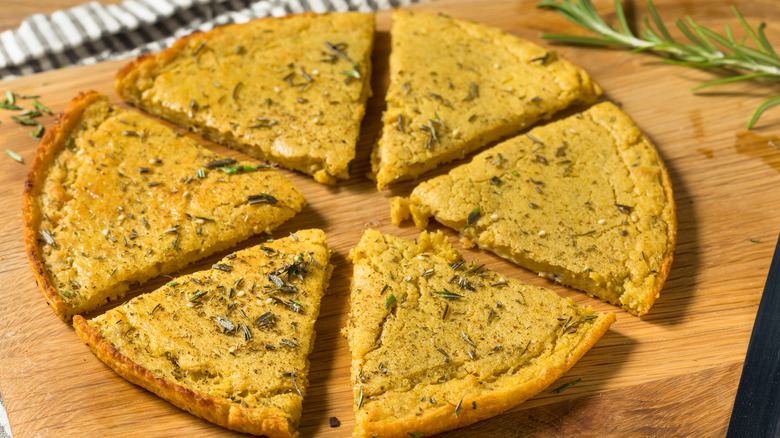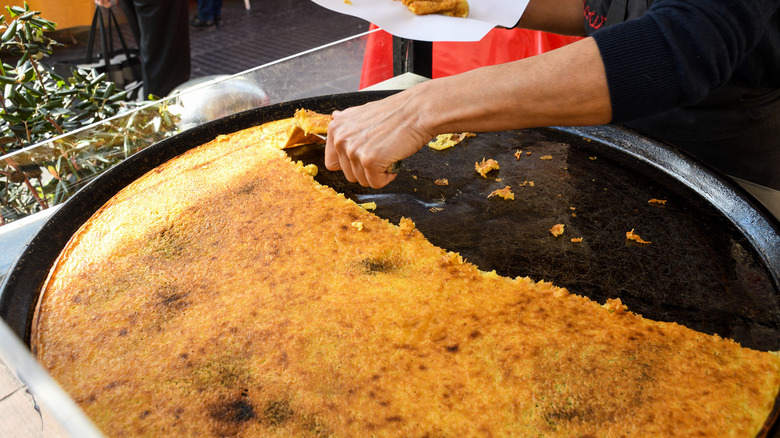Socca: The French Street Food You Should Know
French food calls to mind haute-cuisine and fine dining, replete with intricate dishes that require a lot of time and expertise to prepare, like beef bourguignon, bouillabaisse, ratatouille, coq au vin, and cheesy soufflés. Culturally, there are many rules around how one shops and consumes food in France. Dining etiquette in France is very strict, with many unspoken rules. Usually, there is no snacking or eating in transit, and it is typical to eat late at night, per French Together. Beyond late-night sweet and savory crepes, it is uncommon to find street food in France, though it is becoming more popular, along with a rise in fast food.
However, down at the bustling markets in the south of France, it is customary to snack on a chickpea-based street food. Known by a few names and made in different styles, the next time you're at a marché in France, don't miss out on tasting cade or socca.
What is socca?
In Nice, the famed chickpea-based street food is called socca, which is a cross between a pancake and flatbread, according to The People's Friend. The ingredients needed to make socca are simple: all you need is chickpea flour, olive oil, and water. Once the batter is prepared, it is poured into a shallow pan and baked in a hot oven until it becomes golden and crispy. Traditionally, socca is made in a copper pan over a fire, per My Recipes. Once done, the socca is then sprinkled with black pepper and then cut into bite-sized pieces to enjoy on the spot — usually while walking around and enjoying the open-air markets of France.
Beyond being a street food favorite of the French, socca is also a good base for gluten-free variations of flour-based foods, like pesto pizza. According to Love and Lemons, socca is easy to make and is versatile since it can be served as an appetizer, a side dish, or even as the main entrée, depending on the toppings used.
Varieties of socca
There are several variations of socca found throughout France and northern Italy. In Italy, their version of socca, also made from chickpea flour, water, and olive oil, is called farinata and originates from Liguria. The way farinata is enjoyed is more simple: enhanced with sea salt, freshly ground black pepper, and rosemary. According to Great Italian Chefs, the Ligurian pancake is also at times enjoyed with red onion.
Cade is another chickpea snack variant found in Provence; however, the consistency is less crispy, thicker, and more moist and chewy. Hailing from Toulon, cade was made from corn flour originally and dates back to 1860, per Beyond. It's available at the market in La-Seyne-sur-Mer, where locals usually place orders in advance. In recent years, a sweet option has become available, where sugar is sprinkled directly onto the cade for enjoyment while browsing the fresh fruit, flowers, and sights of a French market.


